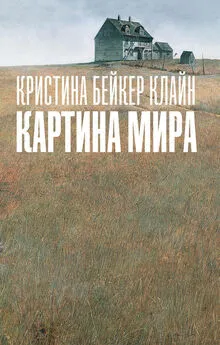Эрик Клайн - 1177 год до н. э. Год, когда пала цивилизация
- Название:1177 год до н. э. Год, когда пала цивилизация
- Автор:
- Жанр:
- Издательство:АСТ
- Год:2018
- Город:Москва
- ISBN:978-5-17-099337-6
- Рейтинг:
- Избранное:Добавить в избранное
-
Отзывы:
-
Ваша оценка:
Эрик Клайн - 1177 год до н. э. Год, когда пала цивилизация краткое содержание
Как это произошло? И кто был виновником этого масштабного всеохватывающего коллапса?
В своей книге Эрик Клайн, отвечая на эти вопросы, рассказывает нам захватывающую историю о том, как коллапс цивилизаций был вызван многочисленными взаимосвязанными неудачами, начиная от вторжения «народов моря» и восстания до землетрясений, засухи и сокращения международных торговых путей. Воплотив в жизнь яркий мультикультурный мир этих великих царств, он рисует широкую панораму империй и глобализованных народов позднего бронзового века и показывает, что именно их взаимозависимость ускорила их драматический крах.
1177 год до н. э. Год, когда пала цивилизация - читать онлайн бесплатно полную версию (весь текст целиком)
Интервал:
Закладка:
Weiss, H. 2012. Quantifying Collapse: the Late third Millennium BC. In Seven Generations since the Fall of Akkad, ed. Weiss H., vii–24. Wiesbaden: Harrassowitz.
Wente, E. F. 2003a. The Quarrel of Apophis and Seknenre. In The Literature of Ancient Egypt, ed. W. K. Simpson, 69–71. New Haven: Yale University Press.
Wente, E. F. 2003b. The Report of Wenamun. In The Literature of Ancient Egypt, ed. Simpson W. K., 116–24. New Haven: Yale University Press.
Wilson, J. 1969. The War against the Peoples of the Sea. In Ancient Near Eastern Texts Relating to the Old Testament, 3rd Edition with Supplement, ed. Pritchard J., 262–63. Princeton, NJ: Princeton University Press.
Wood, M. 1996. In Search of the Trojan War. 2nd Edition. Berkeley: University of California Press.
Yakar, J. 2003. Identifying Migrations in the Archaeological Records of Anatolia. In Identifying Changes: the Transition from Bronze to Iron Ages in Anatolia and Its Neighbouring Regions. Proceedings of the International Workshop, Istanbul November 8–9, 2002, ed. Fischer B., Genz H., Jean E., and Korog K. lu, 11–19. Istanbul: Turk Eskigag Bilimleri Enstitiisii Yayinlan.
Yalgin, S. 2013. A Reevaluation of the Late Bronze to Early Iron Age Transitional Period: Stratigraphic Sequence and Plain Ware of Tarsus-Gozliikule. In Across the Border: Late Bronze — Iron Age Relations between Syria and Anatolia. Proceedings of a Symposium held at the Research Center of Anatolian Studies, Код University, Istanbul May 31-June 1, 2010, ed. K. A. Yener, 195–211. Leuven: Peeters.
Yasur-Landau, A. 2003a. One If by Sea… Two If by Land: How Did the Philistines Get to Canaan? Two: By Land — the Trek through Anatolia Followed a Well-Trod Route. Biblical Archaeology Review 29/2:34–39, 66–67.
Yasur-Landau, A. 2003b. The Many Faces of Colonization: 12th Century Aegean Settlements in Cyprus and the Levant. Mediterranean Archaeology and Archaeometry 3/1: 45–54.
Yasur-Landau, A. 2003c. Why Can’t We Find the Origin of the Philistines? In Search of the Source of a Peripheral Aegean Culture. In The 2nd International Interdisciplinary Colloquium: the Periphery of the Mycenaean World. 26–30 September; Lamia 1999, ed. N. Kyparissi-Apostolika and M. Papakonstantinou, 578–98. Athens: Ministry of Culture.
Yasur-Landau, A. 2003d. The Absolute Chronology of the Late Helladic IIIC Period: A View from the Levant. In LH IIIC Chronology and Synchronisms. Proceedings of the International Workshop Held at the Austrian Academy of Sciences at Vienna, May 7th and 8th, 2001, ed. Deger-Jalkotzy S. and Zavadil M., 235–44. Vienna: Verlag der Osterreichischen Akademie der Wissenschaften.
Yasur-Landau, A. 2007. Let’s Do the Time Warp Again: Migration Processes and the Absolute Chronology of the Philistine Settlement. In The Synchronisation of Civilisations in the Eastern Mediterranean in the Second Millennium В. C. Ill, Proceedings of the SCIEM2000–2nd EuroConference, Vienna, 28th of May–1st of June 2003, ed. Bietak M. and Czerny E., 610–17. Vienna: Verlag der Osterreichischen Akademie der Wissenschaften.
Yasur-Landau, A. 2010a. The Philistines and Aegean Migration at the End of the Late Bronze Age. Cambridge: Cambridge University Press.
Yasur-Landau, A. 2010b. On Birds and Dragons: A Note on the Sea Peoples and Mycenaean Ships. In Pax Hethitica. Studies on the Hittites and their Neighbours in Honor of Itamar Singer, ed. Cohen Y., Gilan A., and Miller J. L., 399–410. Wiesbaden: Harrassowitz Verlag.
Yasur-Landau, A. 2012a. The Role of the Canaanite Population in the Aegean Migration to the Southern Levant in the Late Second Millennium BCE. In Materiality and Social Practice: Transformative Capacities of Intercultural Encounters, ed. Maran J. and Stockhammer P. W., 191–97. Oxford: Oxbow Books.
Yasur-Landau, A. 2012b. Chariots, Spears and Wagons: Anatolian and Aegean Elements in the Medinet Habu Land Battle Relief. In The Ancient Near East in the 12th–10th Centuries BCE: Culture and History. Proceedings of the International Conference Held at the University of Haifa, 2–5 May, 2010, ed. Galil G., Gilboa A., Maeir A. M., and Kahn D., 549–67. AOAT 392. Munster: Ugarit-Verlag.
Yener, K. A. 2013a. New Excavations at Alalakh: the 14th–12th Centuries BC. In Across the Border: Late Bronze-Iron Age Relations between Syria and Anatolia. Proceedings of a Symposium held at the Research Center of Anatolian Studies, Код University, Istanbul May 31-June 1,2010, ed. Yener K. A., 11–35. Leuven: Peeters.
Yener, K. A. 2013b. Recent Excavations at Alalakh: throne Embellishments in Middle Bronze Age Level VII. In Cultures in Contact: From Mesopotamia to the Mediterranean in the Second Millennium В. C., ed. Aruz J., Gra S. B., and Rakic Y., 142–53. New York: Metropolitan Museum of Art.
Yoffee, N., and Cowgill G. L., eds. 1988. The Collapse of Ancient States and Civilization. Tucson: University of Arizona.
Yon, M. 1992. e End of the Kingdom of Ugarit. In The Crisis Years: The 12th Century B. C., ed. W. A. Ward and M.S. Joukowsky, 111–22. Dubuque, IA: Kendall/Hunt Publishing Co.
Yon, M. 2003. The e Foreign Relations of Ugarit. In Sea Routes…: Interconnections in the Mediterranean 16th–6th с. BC. Proceedings of the International Symposium Held at Rethymnon, Crete in September 29th-October 2nd 2002, ed. Chr. Stampolidis N. and Karageorghis V., 41–51. Athens: University of Crete and the A. G. Leventis Foundation.
Yon, M. 2006. The City of Ugarit at Tell Ras Shamra. Winona Lake, IN: Eisenbrauns.
Yon, M. and Arnaud D. 2001. itudes Ougaritiques I: Travaux 1985–1995. Paris: 6ditions Recherche sur les Civilisations.
Yon, M., Sznycer M., and Bordreuil P 1955. Le Pays dVugarit autour de 1200 av. J. — C.: Histone et archeologie. Actes du Colloque International; Paris, 28 juin–1er juillet 1993. Paris: 6ditions Recherche sur les Civilisations.
Zaccagnini, C. 1983. Patterns of Mobility among Ancient Near Eastern Craftsmen. Journal of Near Eastern Studies 42: 250–54.
Zeiger, A. 2012. 3,000-Year-Old Wheat Traces Said to Support Biblical Account of Israelite Conquest; Archaeologist Amnon Ben-Tor Claims Find at Tel Hazor Is a Remnant of Joshua’s Military Campaign in 13th Century BCE. Times of Israel, July 23, 2012.
Zertal, А. 2002. Philistine Kin Found in Early Israel. Biblical Archaeology Review 28/3:18–31, 60–61.
Zettler, R. L. 1992. 12th Century B. C. Babylonia: Continuity and Change. In The Crisis Years: the 12th Century B.C., ed. Ward W.A. and Joukowsky M. S., 174–81. Dubuque, IA: Kendall/Hunt Publishing Co.
Zink, A. R., et al. 2012. Revisiting the Harem Conspiracy and Death of Ramesses III: Anthropological, Forensic, Radiological, and Genetic Study. British MedicalJournal345 (2012): 345: e8268.
Zivie, А. 1987. The Lost Tombs of Saqqara. Cairo: American University in Cairo Press.
Zuckerman, S. 2006. Where Is the Hazor Archive Buried? Biblical Archaeology Review 32/2 (2006): 28–37.
Zuckerman, S. 2007a. Anatomy of a Destruction: Crisis Architecture, Termination Rituals and the Fall of Canaanite Hazor. Journal of Mediterranean Archaeology 20/1: 3–32.
Zuckerman, S. 2007b. Dating the Destruction of Canaanite Hazor without Mycenaean Pottery? In The Synchronisation of Civilisations in the Eastern Mediterranean in the Second Millennium B.C. III, Proceedings of the SCIEM 2000–2nd Euro Conference, Vienna, 28th of May–1st of June 2003, ed. Bietak M. and Czerny E., 621–29. Vienna: Verlag der Osterreichischen Akademie der Wissenschaften.
Zuckerman, S. 2009. The Last Days of a Canaanite Kingdom: A View from Hazor. In Forces of Transformation: The End of the Bronze Age in the Mediterranean, ed. Bachhuber C. and Roberts R. G., 100–107. Oxford: Oxbow Books.
Zuckerman, S. 2010. «The City, Its Gods Will Return ere…»: Toward an Alternative Interpretation of Hazor’s Acropolis in the Late Bronze Age. Journal of Near Eastern Studies 69/2: 163–78.
Zwickel, W. 2012. The Change from Egyptian to Philistine Hegemony in South-Western Palestine during the Time of Ramesses III or IV. In The Ancient Near East in the 12th–10th Centuries BCE: Culture and History. Proceedings of the International Conference Held at the University of Haifa, 2–5 May, 2010, ed. Galil G., Gilboa A., Maeir A. M., and Kahn D., 595–601. AOAT 392. Munster: Ugarit-Verlag.

Примечания
1
В этом я согласен с Дженнингсом (см.: Jennings 2011), который недавно писал о глобализации в Древнем мире. См. также: Sherratt 2003; эта статья, опубликованная десять лет назад, актуальна и сегодня, а Кейти Пол ныне защитила диссертацию по данной теме под моим руководством.
2
См.: Diamond 2005; а также: Tainter 1988 и переработанное издание: Yoffee and Cowgill 1988; еще обсуждение в: Killebrew 2005:33–34; Liverani 2009; Middleton 2010:18–19,24,53; Middleton 2012; Butzer 2012; Butzer and Endfeld 2012. О возвышении и падении империй с точки зрения теории мировых систем, которая вызвала жаркую дискуссию, см.: Frank 1993; Frank and Gillis 1993; Frank and Tompson 2005. Недавно состоялась конференция в Иерусалиме (декабрь 2011 г.) под названием «Анализируя коллапс: разрушение, уход и память»).
3
См.: Bell 2012: 180.
4
Транслитерация хеттских имен и названий на русский язык не является устоявшейся: встречаются и варианты с окончанием на гласную, и такие, где в конце добавляется «с». В настоящем тексте принят вариант написания имен с концевым «с» (Тудхалияс, Мурсилис и т. д.), но в названиях, как в данном случае, сохранена конечная гласная. — Примечание редакции .
5
См.: Bell 2012: 180-81.
6
См.: Sherratt 2003: 53–54, а также: Singer 2012.
7
См.: Braudel 2001: 114.
8
См.: Mallowan 1976; McCall 2001; Trumpler 2001.
9
См.: Roberts 2008: 5; Робертс указывает, что первым использовал этот термин Эммануил де Руж («peuples de la тег») в своей статье 1867 г.; см. также: Dothan and Dothan 1992: 23–24; Roberts 2009; Killebrew and Lehmann 2013: 1.
10
См., например, недавнюю дискуссию в: Killebrew 2005, Yasur-Landau 2010a и Singer 2012.
11
См.: Kitchen 1982:238-39; Monroe 2009:33–34. Некоторые египтологи помещают восьмой год правления Рамсеса III чуть ранее (1186 г. до н. э.) или чуть позднее (1175 г. до н. э., поскольку датировка лет правления древнеегипетских фараонов является приблизительной и во многом представляет собой, так сказать, прихоть конкретных археологов и историков; в данной книге принимается, что Рамсес правил с 1184 по 1153 год до нашей эры.
Читать дальшеИнтервал:
Закладка:










